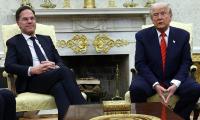There is something comic, something mysterious about the Chinese balloon the crossed the US territory. American citizens might have been amused at the news, but American officials were shocked when a white balloon was spotted, overhead, visibly flying over secret weapons sites, before being shot down on February 4 over the coast of South Carolina.
American officials say that the balloon was programmed for intelligence collection and used for spying, and has violated sovereignty of US and many countries. Three other unidentified flying objects were shot down over North American airspace; one in Alaska, one over Canada’s Yukon territory after approval from the Canadian prime minister, and one over Lake Huron in Michigan.
When the US burst the balloon, it was an injury to China’s pride and victory for the US. The China government has argued that the balloon was ‘weather observation craft’ and expressed strong dissatisfaction over America’s ‘overreaction’. In retaliation, China has blamed the US for illegally flying high-altitude balloons at least ten times over the Xinjiang and Tibet regions, without its approval and violating its sovereignty. The blame and counter-blame reflect the sore reality of the tense US-China relations.
Further examination of the debris caused by the balloon burst will reveal more about the mystery and the operation, which the US says is part of a vast aerial surveillance project of China in the southern province of Hainan, which is collecting military information from India, Japan, Philippines, Taiwan and Vietnam.
The US has reacted promptly and added six Chinese entities connected to China’s suspected surveillance balloon programme to an export blacklist as a punitive measure. In the past, America blacklisted a number of Chinese technology companies, including Huawei, on charges of spying with support from allies.
This episode reflects the escalation of tension between the two countries, which will accentuate polarization and add to the political confrontation that has sharpened the clash of superpowers. The dispute has delayed efforts on both sides to mend the relationship, derailed the warm start of the Biden and Xi relationship we saw in Bali during the G-20 meeting in November last year, and prompted the US to call off its visit to China by US Secretary of State Antony Blinken.
There is a continual risk of such small encounters that could ignite a bigger conflict and heighten rivalry. China and the US are lock in horns, drifting towards a cold war. The shooting of the balloon is a test to check whether the two countries will come forward to stop the ongoing confrontation from spiraling into a full-blown conflict.
The balloon controversy has blurred the line between civilian and military activities. Economic links between the two countries – from semiconductors, research and trade to defence – are so varied that many activities fall under suspicion. There have been umpteen points of friction that have jeopardized bilateral relations between the two countries. America’s backing of Taiwan, China’s support of the Russian war in Ukraine, Biden’s efforts to limit China’s access to advanced technologies, China’s claim in the South China Sea, America’s accusation of cybercrime and intellectual property theft on China, and Western talk of human rights violations in Hong Kong and Xinjiang have made the China-US relationship volatile and unpredictable.
Followed by brief warming in Bali, relations between the two countrieshave nosedived again. Blinken has warned that China must not repeat the ‘irresponsible’ act of sending a balloon over US airspace while Chinese diplomat Wang has said that America’s reaction of shooting down the balloon has damaged the two countries’ relations. General Bradley Saltzman US Chief of Space Operations has singled out China as the “most challenging threat” in space followed by Russia. These words carry more weight, given the surging US-China tensions highlighted by stern exchanges by the two countries over the suspected balloon.
The recent events have led to several questions that will set the course of this dispute: what will be the result of the investigation? What will the inspection of debris reflect? Will the US agree to return the debris on insistence of China? Will there be a threat of reciprocal action? The answers to these questions will define the nature of relationship in the future, which has been badly fractured and disoriented.
Trade between China and the US – as per a report by ‘The Economist’ – is about $2 billion a day. There is a need for crisis management for the sake of commercial and economic linkages. As China’s appetite for global supremacy grows – a direct challenge to American dominance – there are probabilities of more clashes and accidents that could spiral out of control. To avoid perilous situation there should be more diplomatic and military accords and both countries should talk more.
The writer holds an LLM degree in international economic law from the University of Warwick. She can be reached at: beelam_ramzan@yahoo.com
People of that time believed that an eclipse was a symbol of displeasure of gods
Vertically speaking, dominance of domestic debt in Pakistan’s debt portfolio is haunting
Loss of biodiversity is stark reminder that urban mismanagement is not just infrastructural failure but ecological...
Strong public warning systems can also help ensure quick evacuations in places prone to fires
PPPs in Pakistan's WASH sector face significant regulatory and policy challenges that hinder their effectiveness
Instead, it would have powerful chairman with three-year term, appointed at prime minister’s discretion







